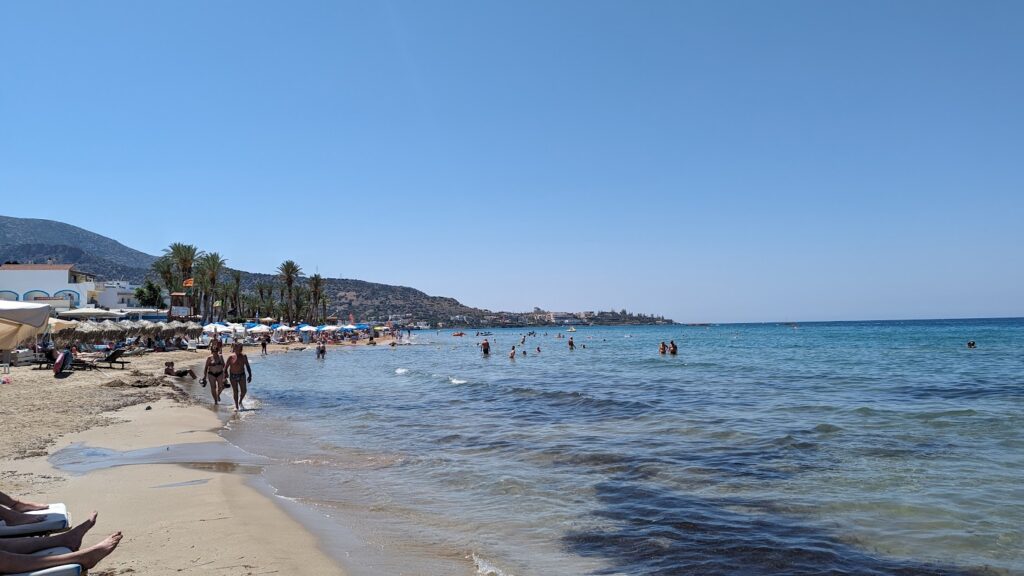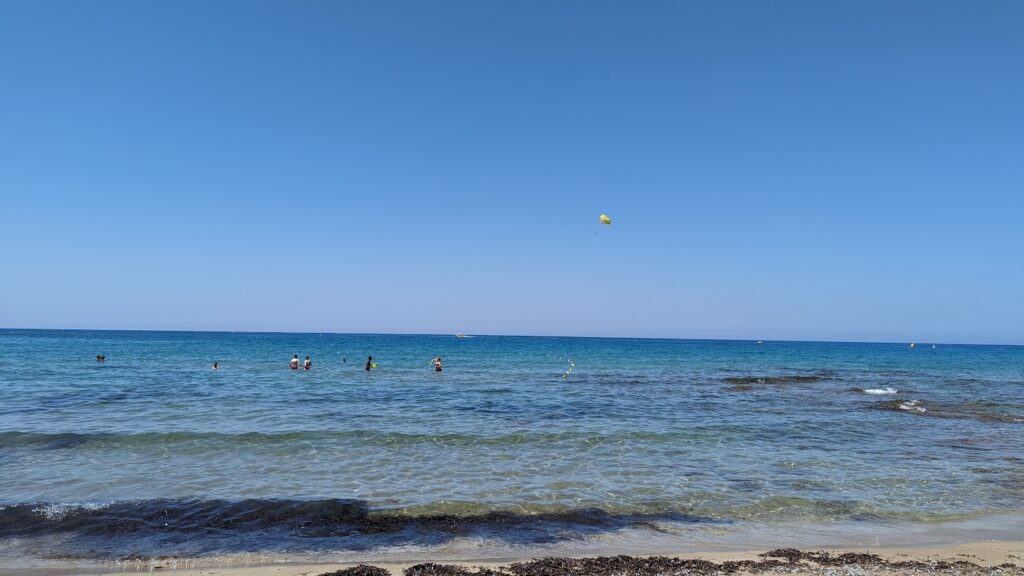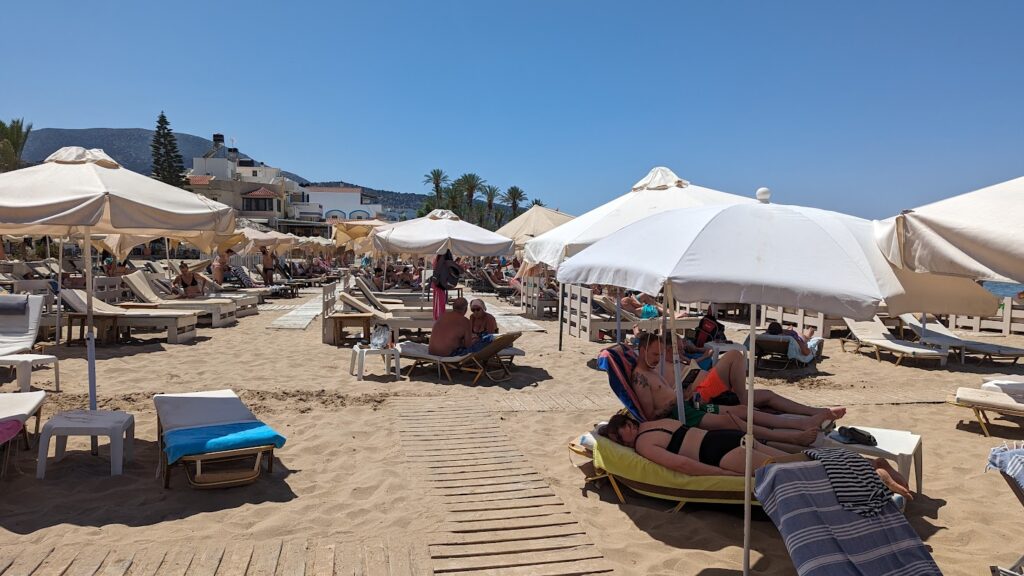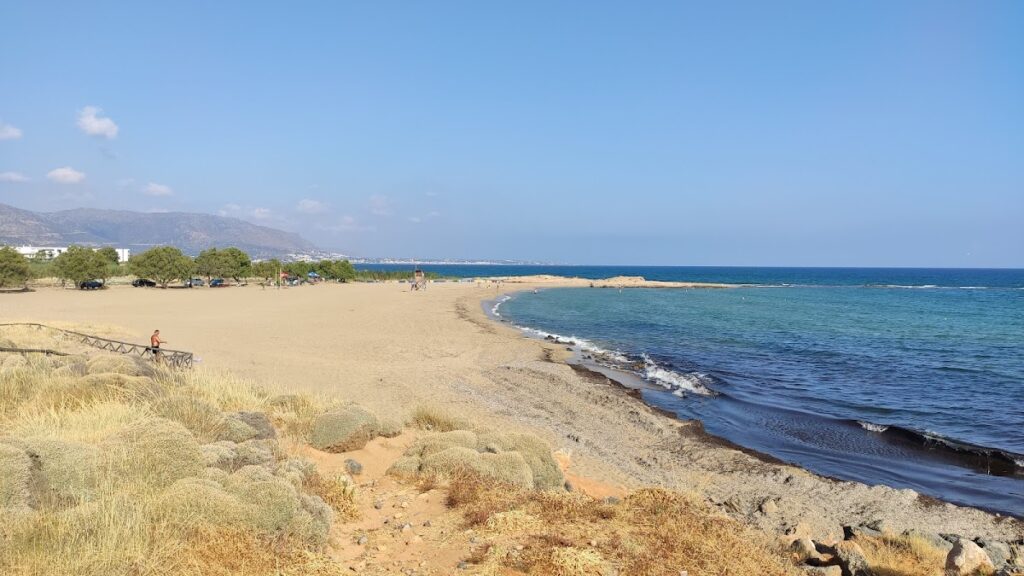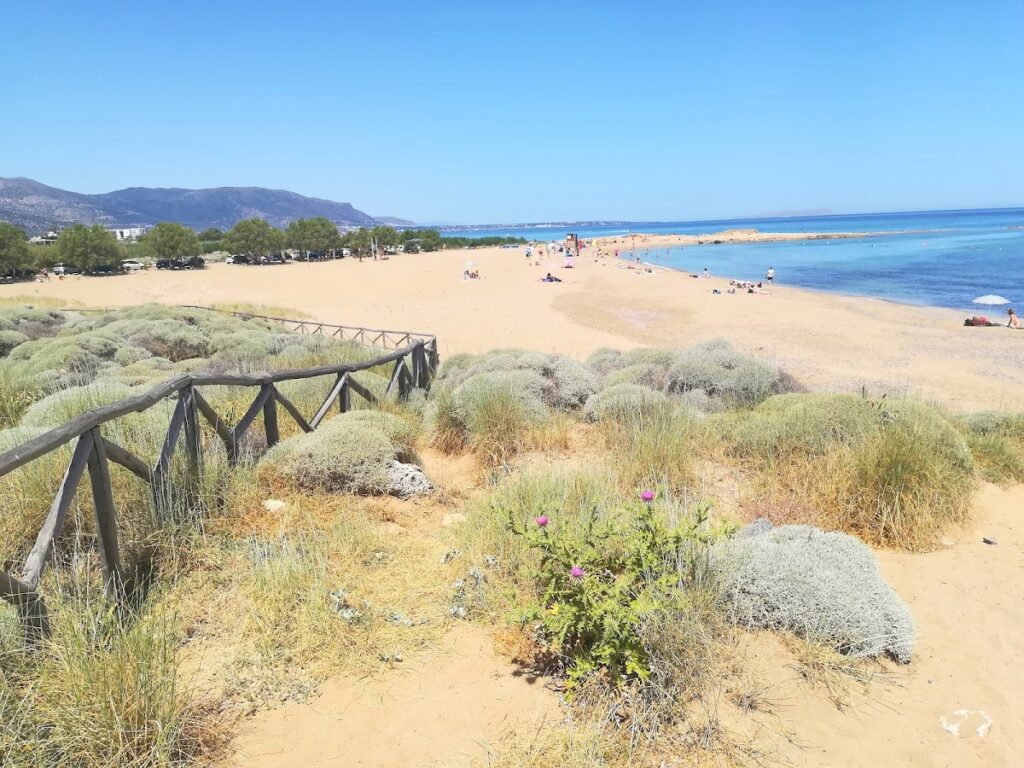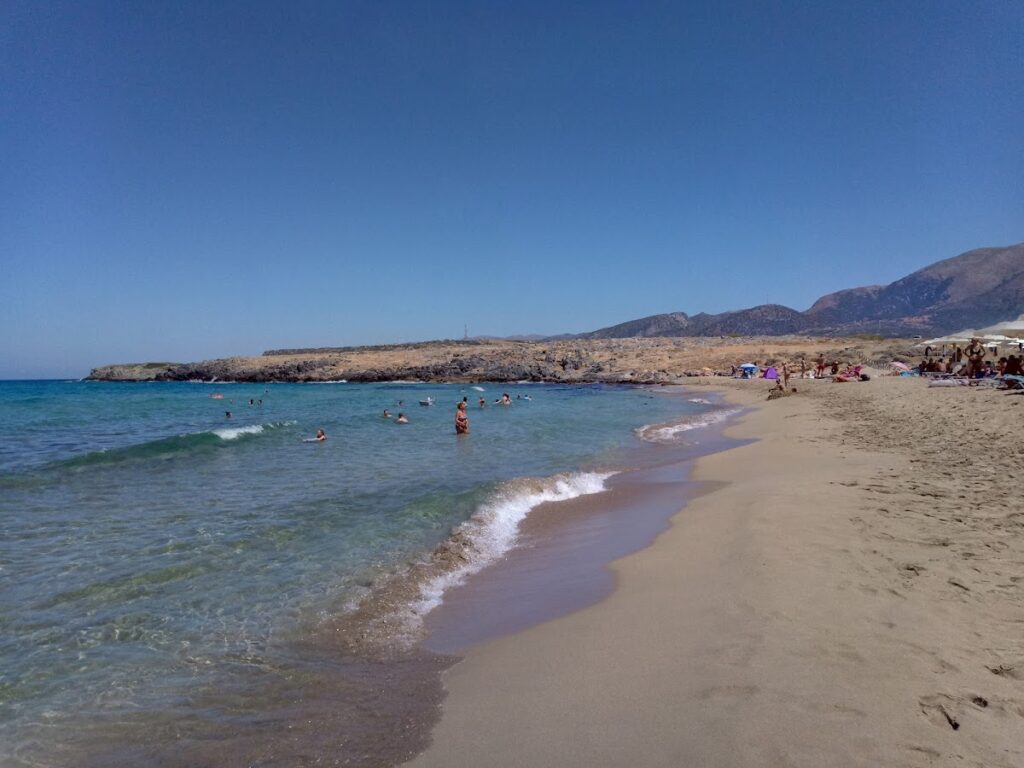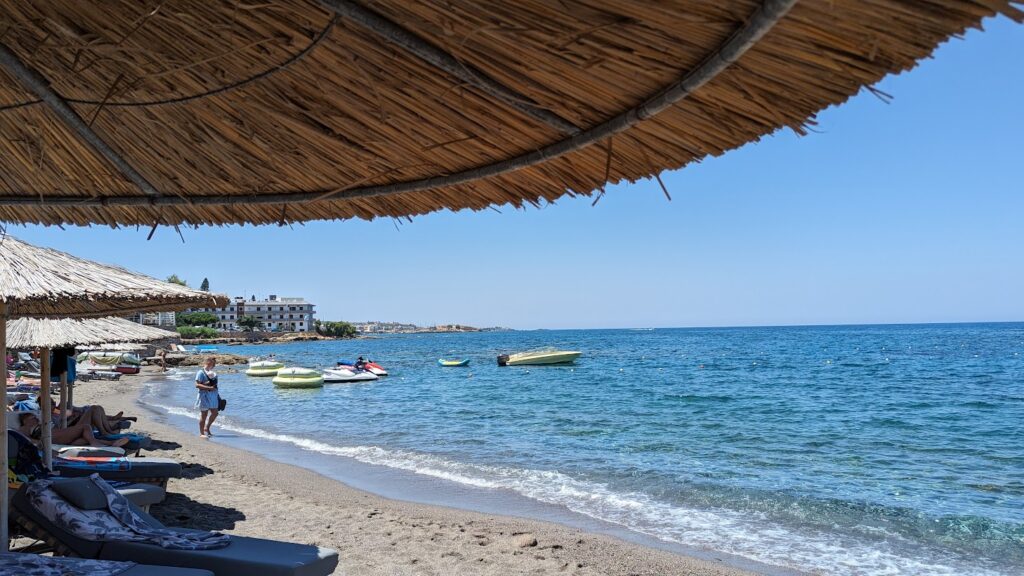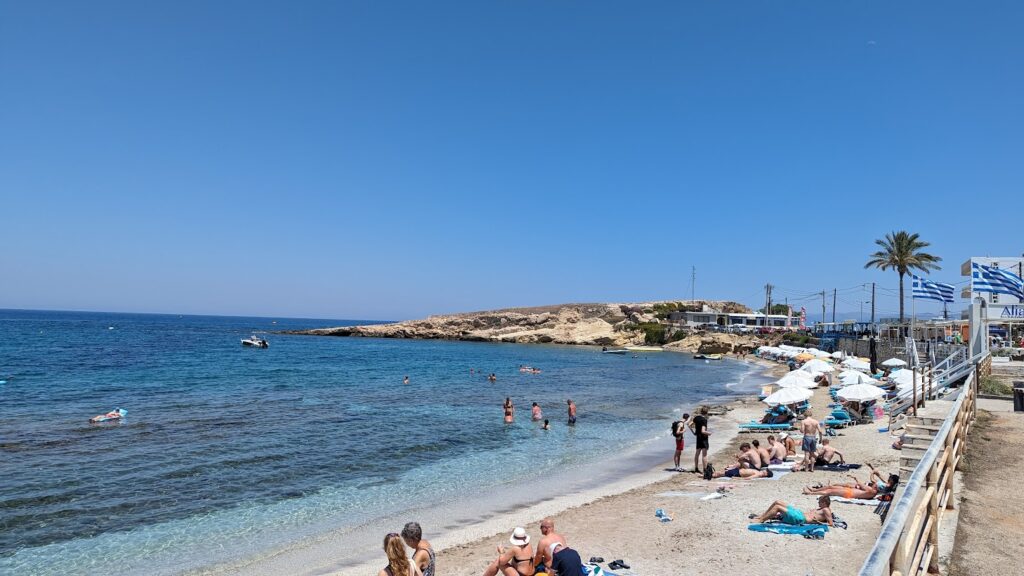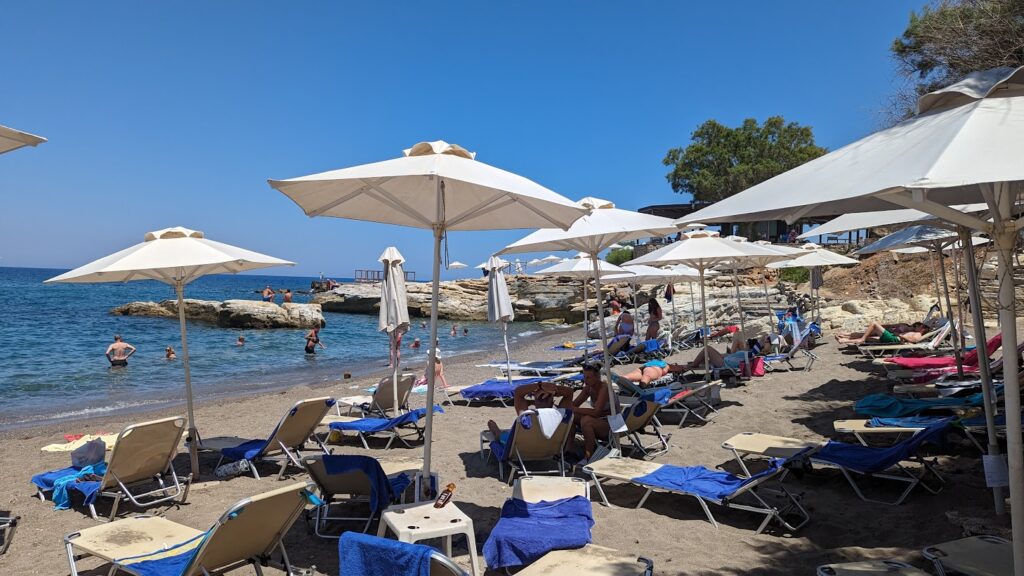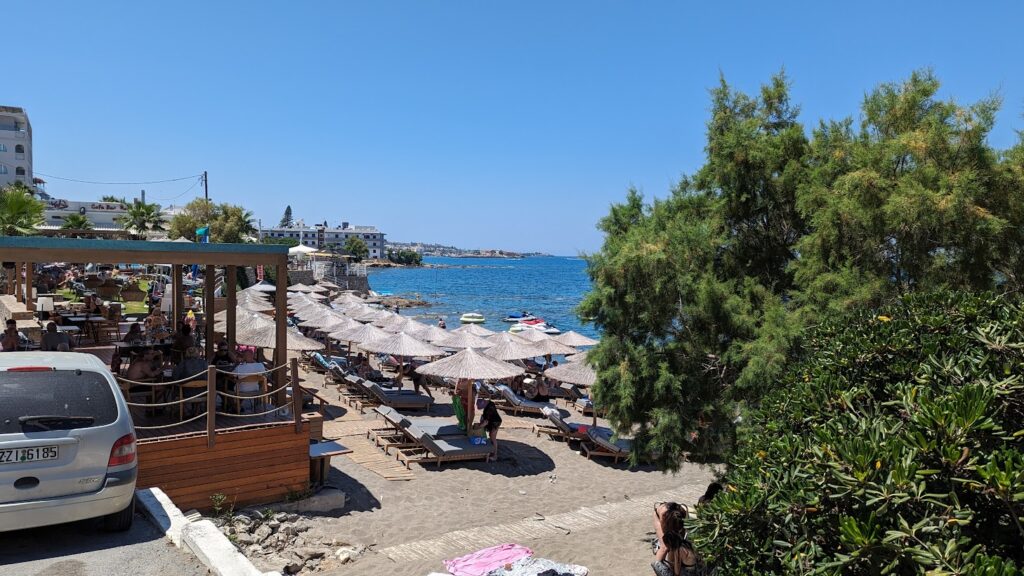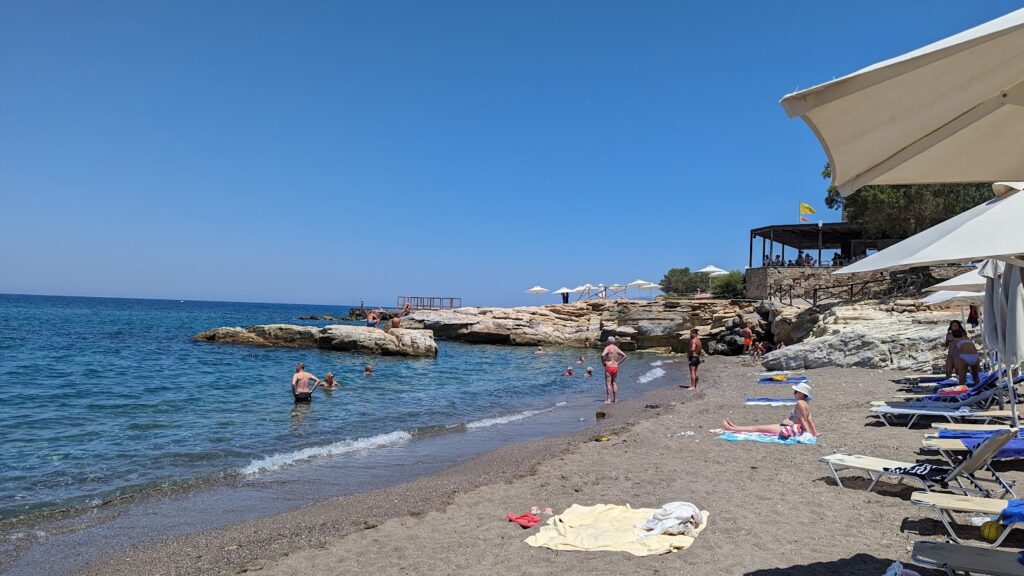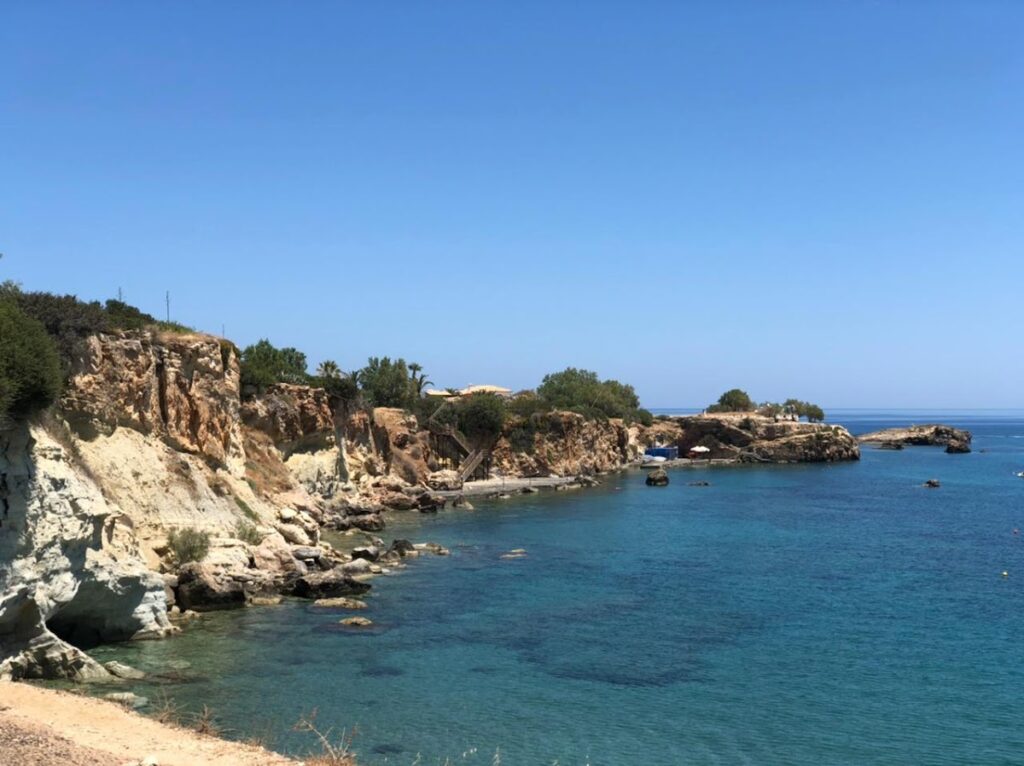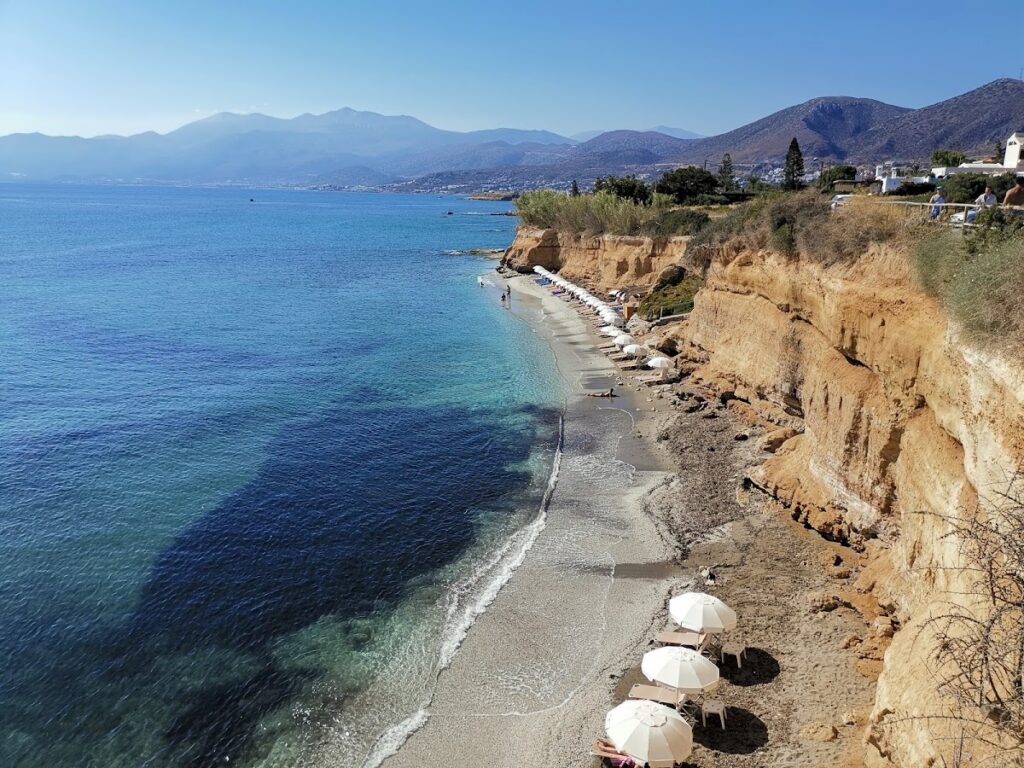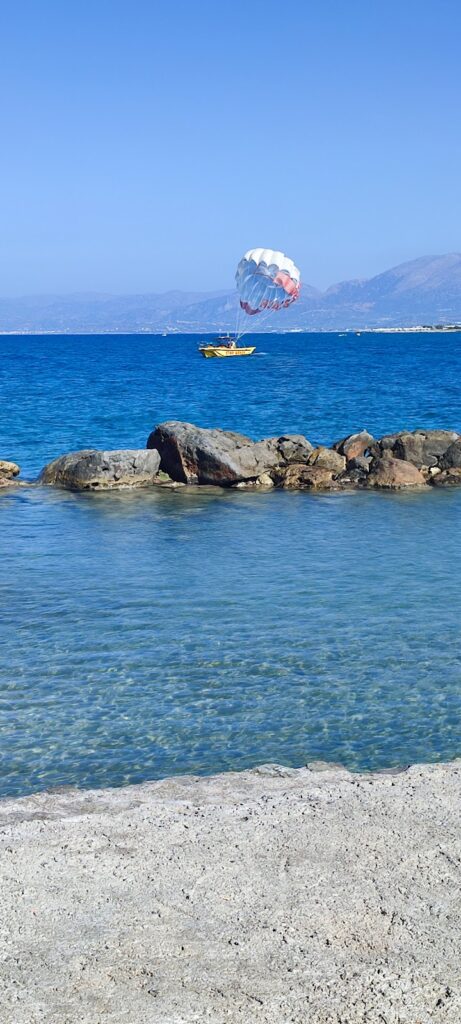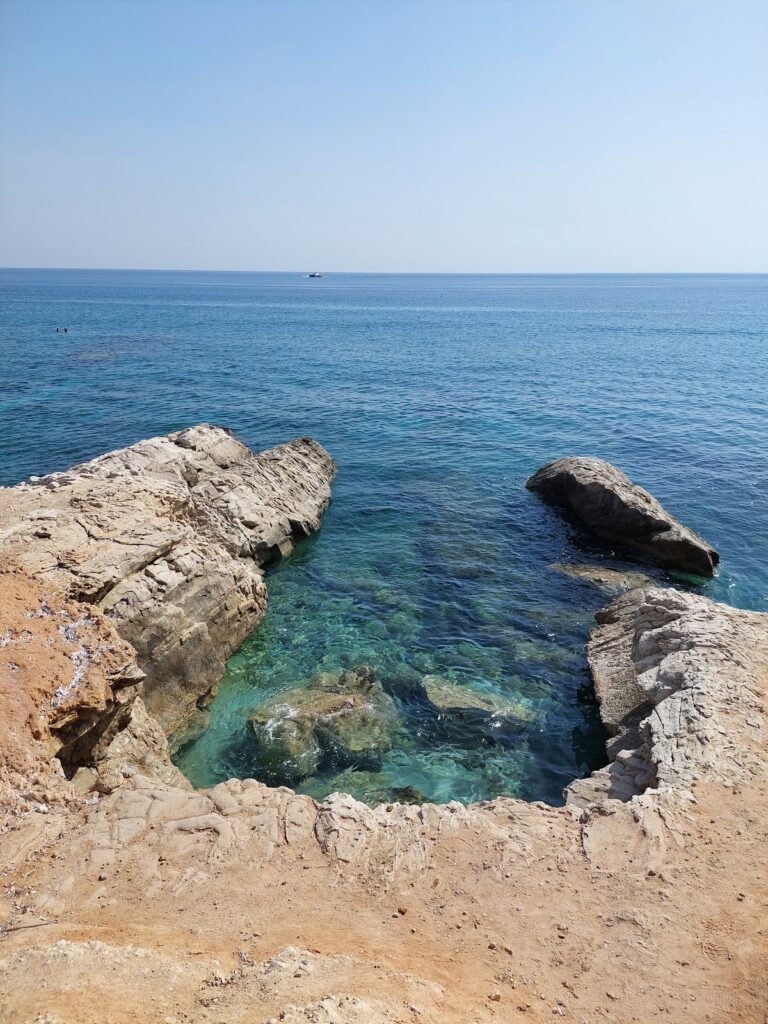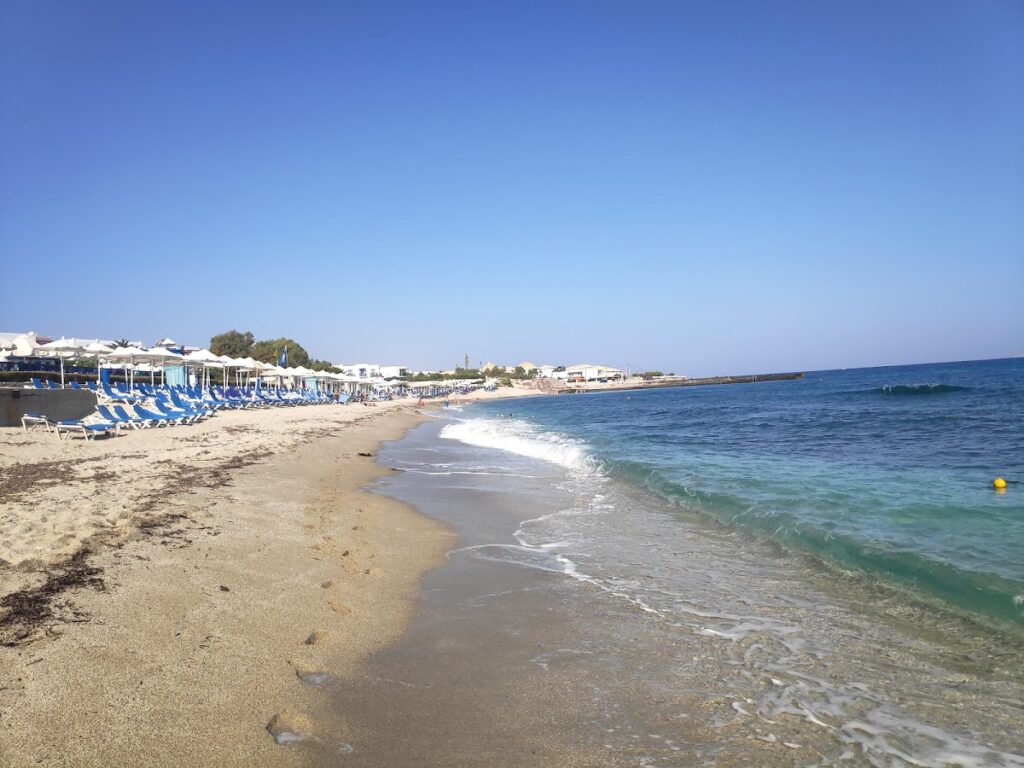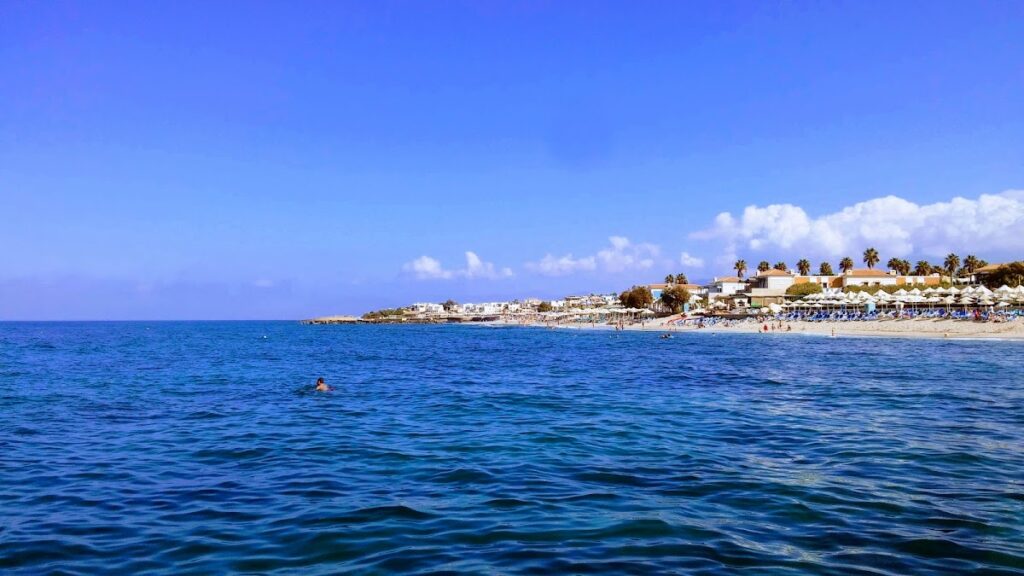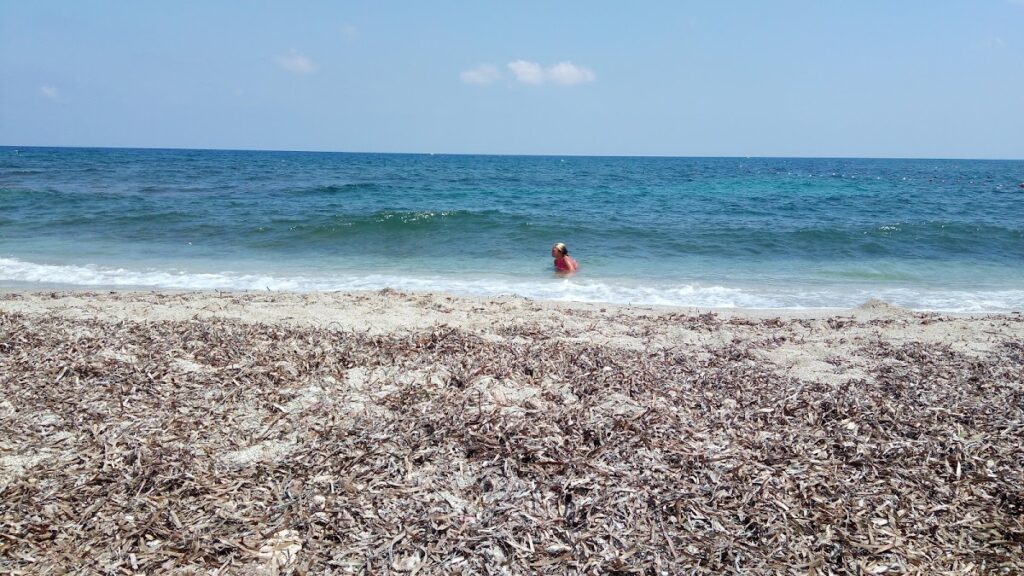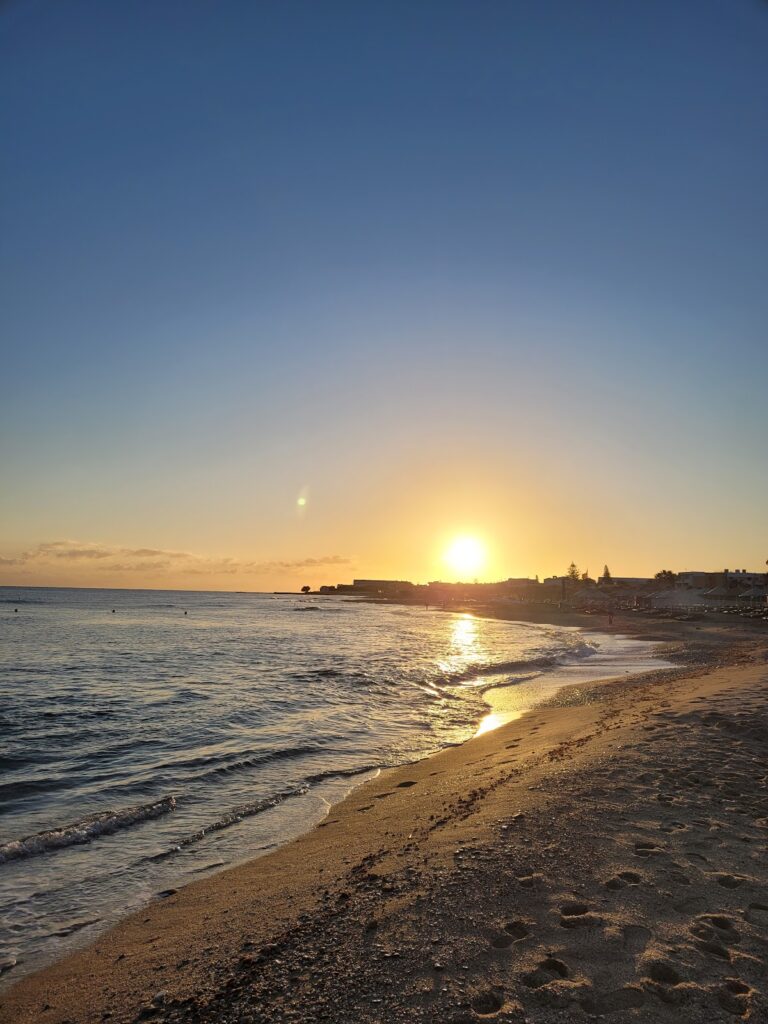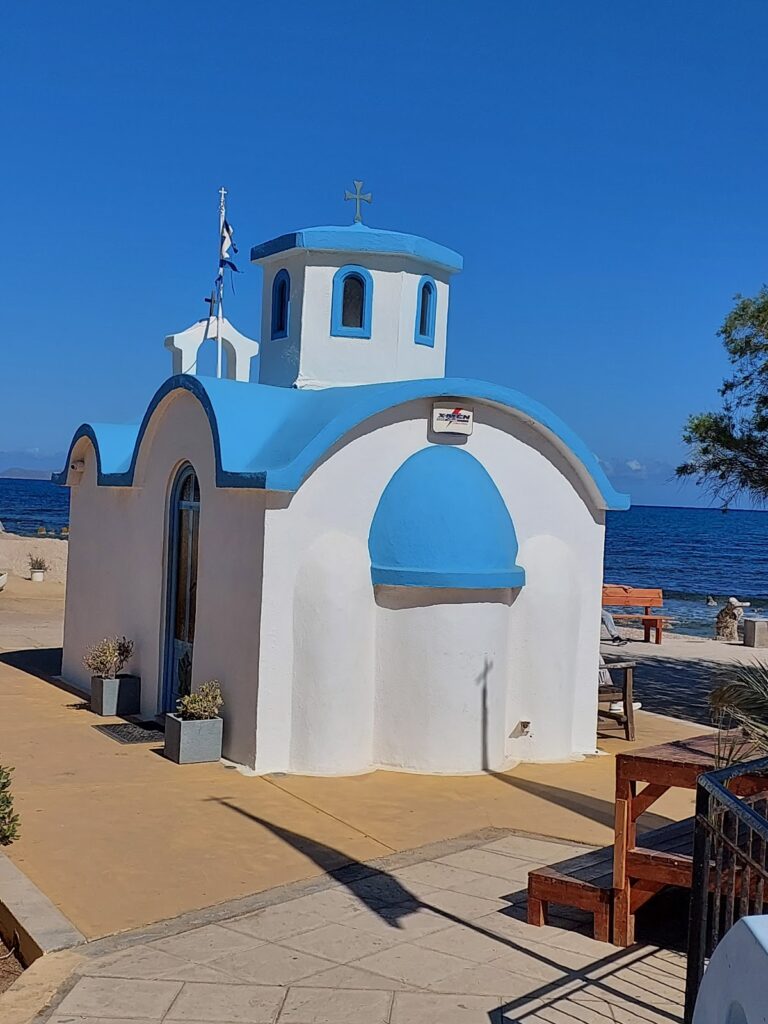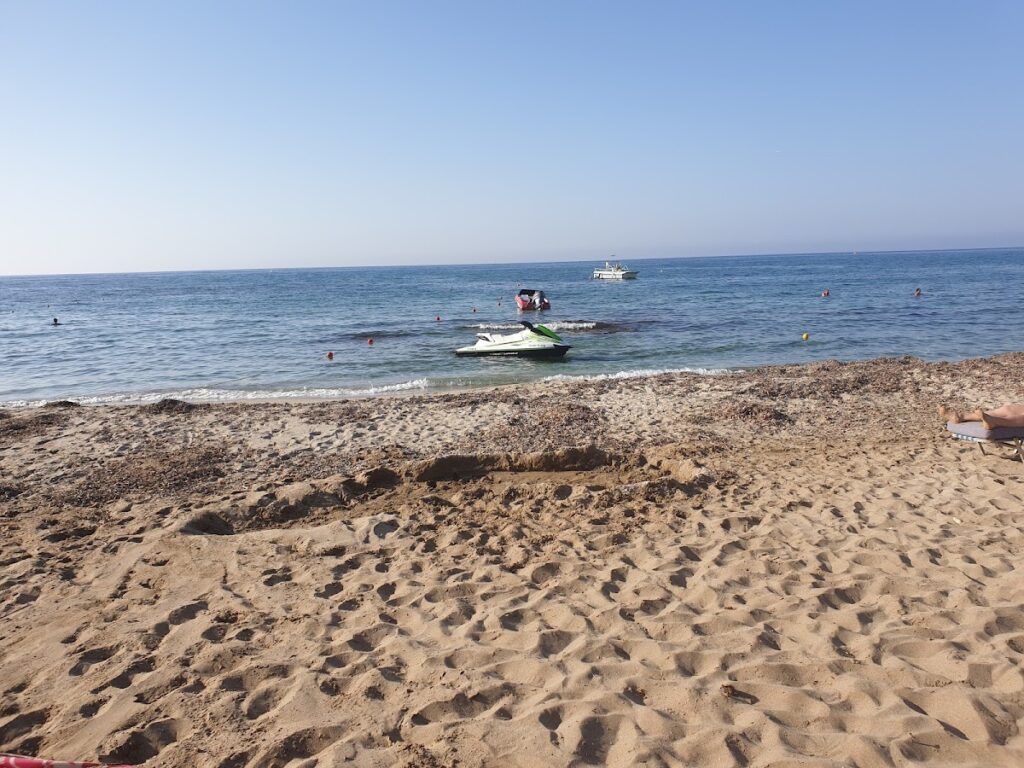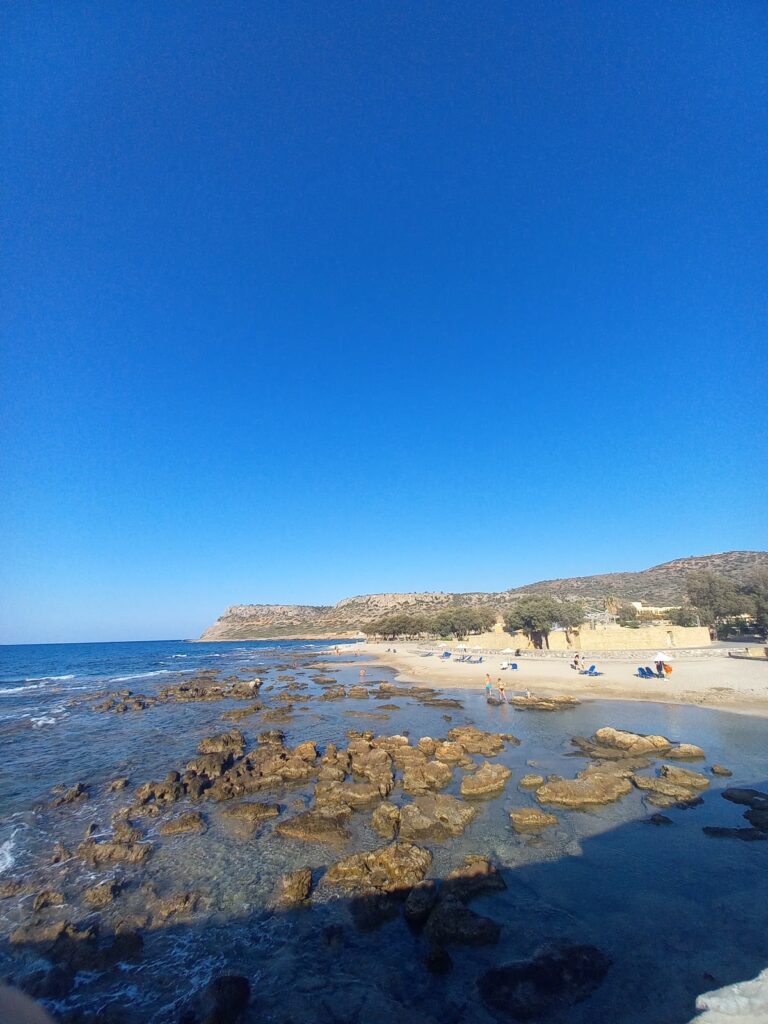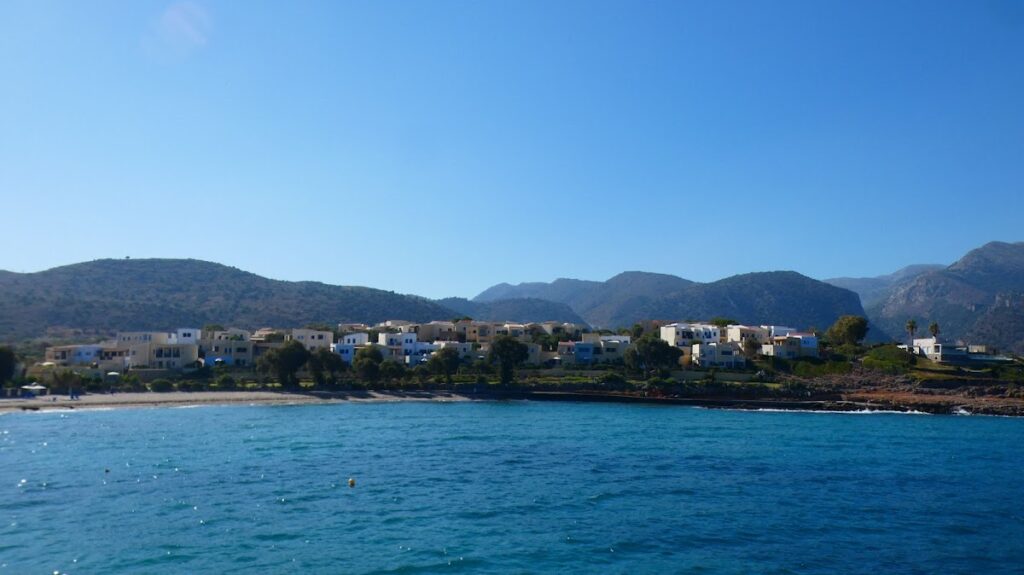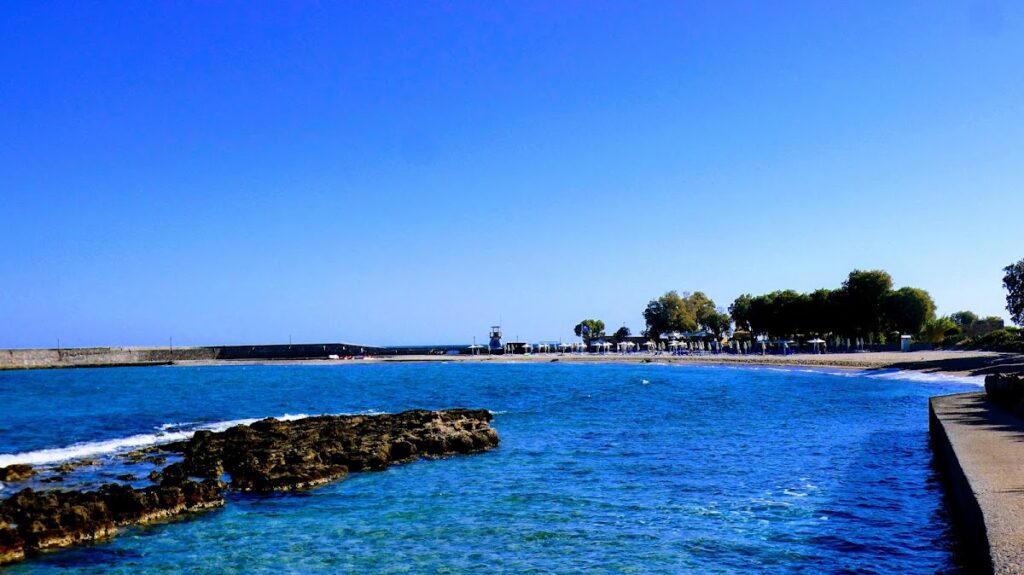Beaches near Stalís, in Heraklion region
Here is list of closest beaches to Stalís
- 160 m
- Stalida beach
- Sand
- Shallow
- Blue
Stalida Beach (or Stalis) is located 30km east of Heraklion, between Malia and Hersonissos. Originally a small seaside village formed by the inhabitants of Mochos, it has now evolved into a bustling tourist destination, harmoniously blending into the neighbouring town of Malia. Stalis caters primarily to families seeking a tranquil retreat, and is beautifully equipped with a range of accommodations, eateries, bars, and taverns, not to mention an ATM and a pharmacy for convenience.
Stalida makes for a perfect base to explore the nearby attractions and engage in an array of activities. The locality is teeming with stunning beaches, enriching archaeological sites, and captivating cultural spots. A short 6km trip from the beach takes you to the Aquaworld Aquarium & Reptile Rescue Centre – a place where you can acquaint yourself with a variety of marine creatures and reptiles. Nearby, the Lychnostatis Open Air Museum offers a deep dive into Crete’s natural history and culture.
For those seeking aquatic thrills, the Acqua Plus waterpark, the island’s largest, is not far from the coastline. To the west, beyond Malia and Potamos Beach, lies the Malia Palace Archaeological Site, home to the third largest Minoan palace complex and steeped in millennia-old history. A further 20km south, the ancient Minoan settlement of Karfi offers another slice of history, believed to have been home to around 3,500 inhabitants.
For those with a passion for hiking, the Bulgarian trail, starting from Stalis and leading up to Mohos, is a must. Named after the Bulgarian prisoners of war who constructed it during WWII, this 5km trail, though lengthy and ascending, is an experience in itself. Along the way, you’ll cross a pedestrian bridge spanning the highway and encounter the contemporary Panagia Theogenitor Monastery. Once in Mohos, enjoy a leisurely stroll along narrow lanes, relax with a coffee in the spacious square, and enjoy the warm company of the locals. You can choose to return via the same trail or follow a different one leading from Mohos to Malia.
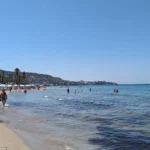
- 2.4 km
- Drapanos beaches
- Sand
- Shallow
- Blue
Living on the island of Crete, about 28km east of Heraklion, you’ll find the popular tourist town of Hersonissos. It’s known for its array of beaches, particularly on the eastern side. Located a short 2km distance from the Hersonissos port, these delightful coves extend up to the Drapanos Cape. The most vibrant among them is Star Beach, known for being one of the island’s busiest spots.
As you travel further east, there are several small, scenic sandy and pebbly coves that offer a feeling of tranquillity. Some of these secluded spots enjoy cool water due to the presence of freshwater springs in the sea. Next to these coves, you’ll find the Lychnostatis Folklore Museum, a place where visitors can delve into the historical Cretan way of life.
The final beach in the Hersonissos vicinity is located in front of the Nana Beach Hotel, at the edge of Drapano Cape, and is accessible by heading east. This well-maintained beach has sunbeds and a lifeguard on duty, with a variety of water sports and beach bars available. Thanks to the protection offered by two long piers, this beach enjoys calm waters all year round, as it’s shielded from the north winds.
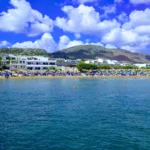
- 2.6 km
- Malia beach
- Sand
- Shallow
- Blue
Situated 35km to the east of Heraklion, Malia is a vibrant hub known for its dynamic nightlife and historic appeal with the third largest Minoan palace in Crete, the Malia Palace. Malia’s appeal is augmented by its sandy beaches, a key catalyst for its tourism development.
The main beach in Malia forms the eastern stretch of a 6km long bay commencing from Stalis. This vast beach boasts fine sand and shallow water, often thrumming with life, so much so that there’s barely a gap between sunbeds! Catering to all your comfort needs, the beach offers not only standard amenities such as umbrellas and water sports but also exclusive services like beachfront massage, a beach gym, pool bars at the hotels, and more.
However, if tranquillity is what you’re after, Malia might not be the best fit. You could consider venturing east, beyond the local port, towards the serene beaches of Pirgos and Potamos.
Opposite Malia’s main beach lies a stunning spectacle – the small islet of Afendi Christos, home to the Metamorphosis tou Sotiros church. This quaint church becomes a hub of activity on August 6th each year, as many people congregate to partake in the service and the church’s festivities.
Nearby, a spring is believed by locals to contain holy water, said to aid women wishing to conceive. Accessible by a short swim from the shore, this islet offers a unique and serene experience just off the coast.

- 4.5 km
- Potamos beach - Heraklion
- Sand
- Shallow
- Blue
The primary beach of Malia, situated in the heart of the town, is often teeming with visitors. As a result, those seeking a break from the hustle and bustle tend to head towards the sandy stretches to the east of Malia’s port, conveniently located near the Palace of Malia. The most easterly of these beaches is named Potamos (meaning River), due to a small stream that flows along its eastern edge, adjacent to Malia’s wetlands.
Potamos is a lengthy, sandy expanse that is well maintained, yet typically less populated than Malia’s main beach. The eastern portion of the region remains relatively untouched due to its archaeological significance. However, to the west of the beach, a number of hotels can be found, each boasting its own sandy cove.
The Malia Swamp is a wetland of unparalleled ecological importance, home to an expansive reed bed that provides habitat for numerous bird species. This area also preserves several types of coastal vegetation that have been lost elsewhere on Crete. The entire area is irrigated by water that flows from Mount Selena, forming a stunning river in the winter months, mere meters from the shore, resulting in crystal clear waters that feed into Potamos beach. The sea here is so fresh, locals can even drink from it! It’s not an uncommon sight to see goats descending from the mountain, swimming in the sea and drinking the water due to its fresh scent. Surrounding Potamos are smaller sand dunes, which come autumn, are adorned with stunning white sand lilies.

- 4.5 km
- Hersonissos beaches
- Sand
- Shallow
- Blue
Hersonissos, a bustling tourist hotspot in Crete situated just 28km to the east of Heraklion, is renowned for its tranquil beaches and calm seas – a rarity along the northern coast of Crete due to the prevailing northern winds. The most serene beaches can be found to the west of the port, shielded by the Cape Sarandaris. Towards the east of the port, however, lie the resort’s most frequented beaches.
As you venture east from the port of Hersonissos, the first sight to greet you is a sprawling, narrow, sandy beach, buzzing with throngs of beachgoers. It’s impeccably organized and conveniently close to the city’s amenities, though it may not be the best choice for those seeking a more serene environment.
Journeying further east, a series of small, sandy coves become apparent, primarily situated in front of hotels. Of these, Silva Maris Beach stands out with its high level of organization, a lifeguard, and numerous facilities. Continuing eastwards, you’ll encounter Star Beach, one of Crete’s most populous beaches, largely patronized by British and Dutch tourists. Lastly, near Cape Drapanos lie the peaceful beaches of Eastern Hersonissos, offering a quieter seaside experience.

- 6.0 km
- Agia Varvara beach
- Sand
- Shallow
- Blue
The Agia Varvara beach, positioned 41km to the east of Heraklion and nestled between Malia and Sissi, earns its name from a church in the east dedicated to Santa Barbara. This sandy haven forms a petite bay in front of a hotel, with the islet of Agia Varvara just across the bay, an ideal spot for swimming, although one should be careful of the strong currents. The beach is well-equipped with sunbeds and umbrellas, and tamarisk trees are scattered around for added shade. However, be aware that this beach, like many others in northern Crete, is often subject to the frequent northwest winds.

- 6.1 km
- Sarandaris coves
- Fine Pebbles, Rocks in places, Sand
- Normal
- Blue, Green
The tranquil beaches of Hersonissos Coves, also known as Limanakia, are located 27km east of Heraklion, extending from Cape Sarandaris to Hersonissos harbour. The beaches are protected from the strong northwest winds by Cape Sarandaris (Sarantari), providing calm waters for visitors. These coves are easily reachable and are situated near the vibrant town of Hersonissos with plenty of bars and cafes.
The western edge of the coves features a concrete dock ideal for diving, nestled on the rocky western side of Cape Sarandaris (Sarantari) near the quaint St. George Sarandaris chapel. A staircase leads to a sunbathing spot with hotel umbrellas and a rocky seabed perfect for swimming and snorkeling.
Further down, at Cape Sarandaris’s base, you’ll discover the breathtaking Sarantari Cape beach, arguably the most picturesque and sheltered beach in Hersonissos. Its sandy beaches, shallow crystal-clear waters, and an intriguing sea cave make it a tranquil alternative to other beaches, despite the challenging descent through steep limestone cliffs.
Contrary to popular belief, Hersonissos also has a stony naturist beach located next to Sarandaris Cape, hidden discreetly by tall cliffs. This sandy, rocky cove provides a peaceful spot for swimming and solitude.
The well-known Sarandari beach comes next, popular among children due to its shallow waters and soft sands. The beach offers umbrellas, sunbeds, and a small canteen for convenience.
Next to Sarandari is Giofyri beach, situated under the main road and supported by a massive concrete wall. With its unique white coarse sand, deeper waters, and rocky seabed, it’s a popular choice among visitors, complete with umbrella and sunbed facilities.
Heading east from Giofyri along the coastal road, a series of small, slim beaches framed by white rocks awaits, their light-blue waters offering a truly mesmerizing sight. This captivating landscape stretches until you reach the large beach in front of the Creta Maris hotel, which extends up to Hersonissos port. This beach is well-equipped with sunbeds, umbrellas, water sports facilities, and a beach volleyball court, becoming busier and more exposed to winds nearer the harbor.
Regardless of whether you decide to swim, a casual walk from the port to Cape Sarandaris offers stunning views of Hersonissos Bay and St. George’s chapel in Sarandaris. At Hersonissos port, consider visiting the lighthouse and the Agia Paraskevi church, partially built into the rock. On Kastri Hill, the remnants of the early Christian Hersonissos basilica and its preserved mosaics are a must-see.
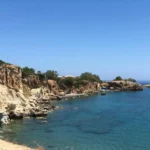
- 7.2 km
- Anissaras beaches
- Fine Pebbles, Rocks in places
- Normal
- Blue
Located 21km east of Heraklion and west of Cape Sarandaris, the tranquil resort of Anisaras is now home to a plethora of large hotels, most of which provide all-inclusive services. Small sandy beaches with rocky seabeds line the front of these hotels, all well-equipped with umbrellas and sun beds mainly offered complimentary to hotel guests.
Although beautiful, the beaches have a generally rocky seabed, making them popular with snorkelers. Regular waves can pose challenges. The beach near Analipsi, however, the longest in the area, is notably sandier. The coastal road of Anissaras starts from here, running along the coast, stopping before the large Anissaras hotel complex, and then extends southwards, passing around the hotels up to Cape Sarandaris. To swim at the hotel-front beaches, one must either stroll along the coast until finding a preferred cove or seek permission from hotel security to cross the hotel grounds.
The small, picturesque chapel of St. George can be found on Cape Sarandaris, offering breathtaking views of Hersonissos’ western coves. It can be accessed by walking eastwards from the hotel beaches or by taking the road that links Anisaras and Hersonissos. Near the cape, a stone footpath leads to the church.
Anisaras is not a structured settlement, but rather a scattering of hotels and holiday homes, limiting dining and entertainment options outside the hotels. However, the close proximity of Hersonissos provides alternatives. Access to Anisaras from Heraklion by bus is slightly problematic, with no direct route available. The buses destined for Hersonissos stop about 2km from the beach, necessitating a taxi.
Contrary to rumors, Anisaras does not derive its name from the plant anise, which is not found in the area. Instead, the name is a corruption of ‘agisaras,’ the Greek name for the plant Cistus creticus (also known as aladania), which is abundant in the region.
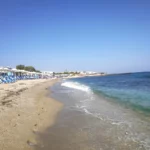
- 9.1 km
- Analipsis beaches
- Rocks in places, Sand
- Normal
- Blue
Analipsi, or Ascension, is a village situated 20km to the east of Heraklion and is named after the Ascension of Christ church. Positioned in a fertile valley, the area is primarily utilized for olive groves. In the early 20th century, it was known as Svourou Metohi, after the Turks who owned land there. Upon Crete’s liberation from the Ottomans, Analipsi was given to the shepherds of Agios Georgios village in Lasithi Plateau as a winter grazing ground. Now, these shepherds’ fortunate descendants own expansive properties featuring hotels, shops, restaurants, and various tourist amenities.
Compared to neighboring resorts, Analipsi is less touristy and more peaceful, making it a preferred destination for families. The village front features a quaint pier with a charming church dedicated to Agia Marina. To the west of the chapel, the coast is rocky, save for a small harbor with a lovely beach. East of the chapel, you’ll find the main sandy beach of Analipsis, which is well-maintained. Though the water isn’t deep, summer months often bring waves.
A leisurely afternoon can be spent wandering through the charming alleys of the old traditional village, admiring the beautiful gardens and stone-paved square. You might also want to visit the four-aisled Ascension church, dedicated to the Virgin Mary, the Ascension of Christ, the Holy Cross, and Saint Efrosinos. The village’s main street, lined with cafes and shops, runs perpendicular to the coast.
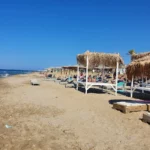
- 9.1 km
- Sissi beaches
- Rocks in places, Sand
- Normal
- Blue
Sissi, also known as Sisi, is a tranquil traditional seaside village nestled 26km west of Agios Nikolaos and 41km east of Heraklion, not far from Malia. The village is renowned for its natural harbour, characterized by tranquil deep green waters, and its charming taverns nestled within narrow streets. The Sissi coastline is predominantly rocky, with only a few sandy stretches. The sea around here is typically choppy, making the only calm swimming spot the small beach within the harbor (Limani). This petite beach offers a few umbrellas and showers for visitors.
If you desire to explore other beaches, you can travel east to Harkoma bay, home to the well-kept Boufos beach. This sandy beach is exposed to the wind. Adjacent to it, you’ll find the smaller Avlaki beach, situated at the exit of a narrow bay.
Moving further east, you’ll find the sandy Kalimera beach, located in front of the Kalimera Kriti hotel. Managed by the hotel, the beach is well-organized and boasts of shallow waters, making it perfect for children. On the opposite side of the hotel is Spiliada, the last beach within the Sissi territory. Spiliada is a sandy beach shaded by numerous tamarisk trees, offering a more peaceful atmosphere compared to the other beaches.
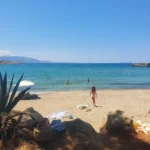
No results available
ResetBeaches in other nearby areas
No results available
Reset